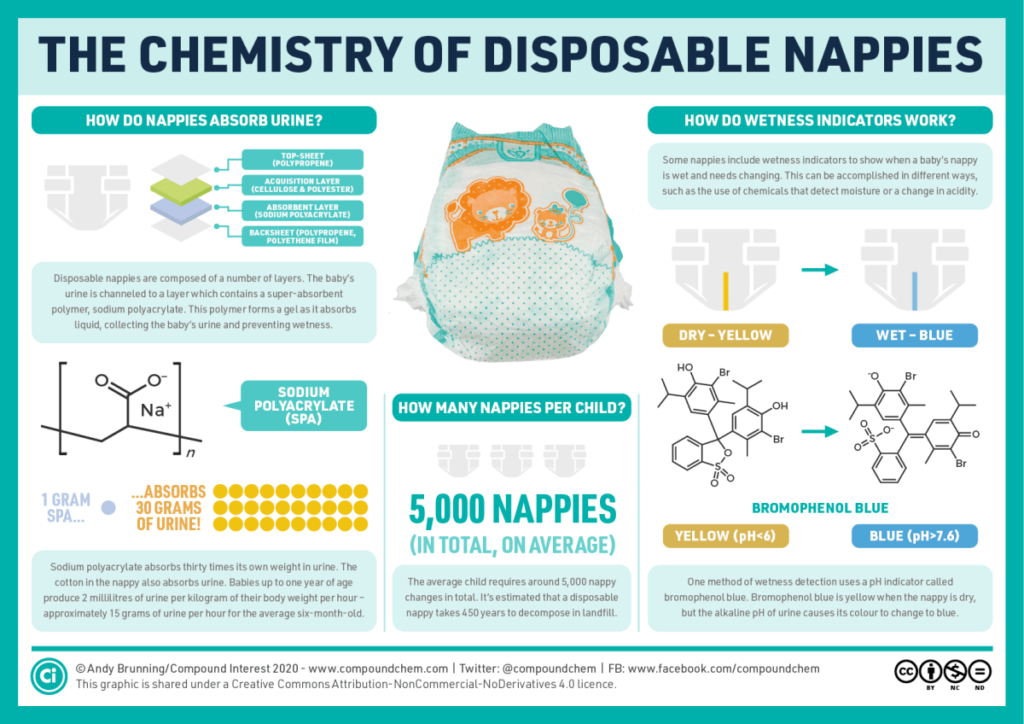Nappies are Amazing!

Nappy Absorbency:
Who’d have thought there was so much science and tech behind the simple nappy?
Almost all disposable nappies have a special core made up of what is called S.A.P. Now, this stuff is super impressive stuff – it’s essentially a bunch of liquid trapping crystals that soak up to 30 times their own weight in wee, pee, water or whatever is thrown at it.
The problem is that S.A.P. stands for Super Absorbent Polymer and, you guessed it, polymer is plastic. So, even the best eco disposables will contain this stuff. The idea for biodegradable options is to maximise the bio-materials content elsewhere. Although this stuff is really small, it actually makes up a decent chunk of the nappy by weight; our in-depth reviews (e.g. Eco Boom biodegradable nappies) showed it accounting for up to 25% of total weight for the most eco-friendly nappies and more for less eco ones. Although S.A.P. doesn’t take all the credit; the rest goes to other layers and the most eco brands tend to stuff a load of natural wood pulp (sometimes referred to as cellulose pulp) with it to add as absorbent material.

We get excited by nappies, but not just because we spent too much time handling them both on our own children and for product reviews at Planet Hugs. It’s also really important!
You can Google any variation of statistics to reveal how much waste us parents are throwing away and how much of an eco impact there is going into supply of materials, product manufacture, shipping and also through recycling methods.
If you’re even vaguely as interested in these sorts of eco-issues then we recommend browsing our eco baby product reviews and following us on our social channels.
Remember – there’s still hope…if we all play our part.